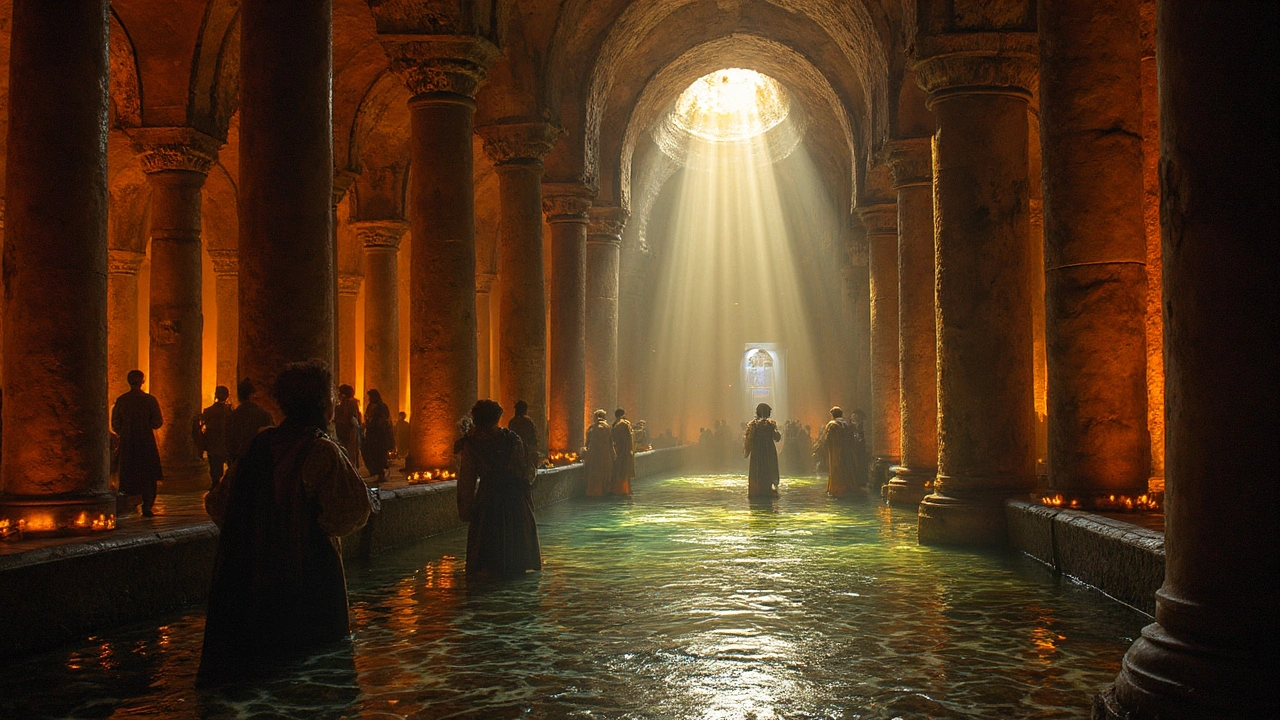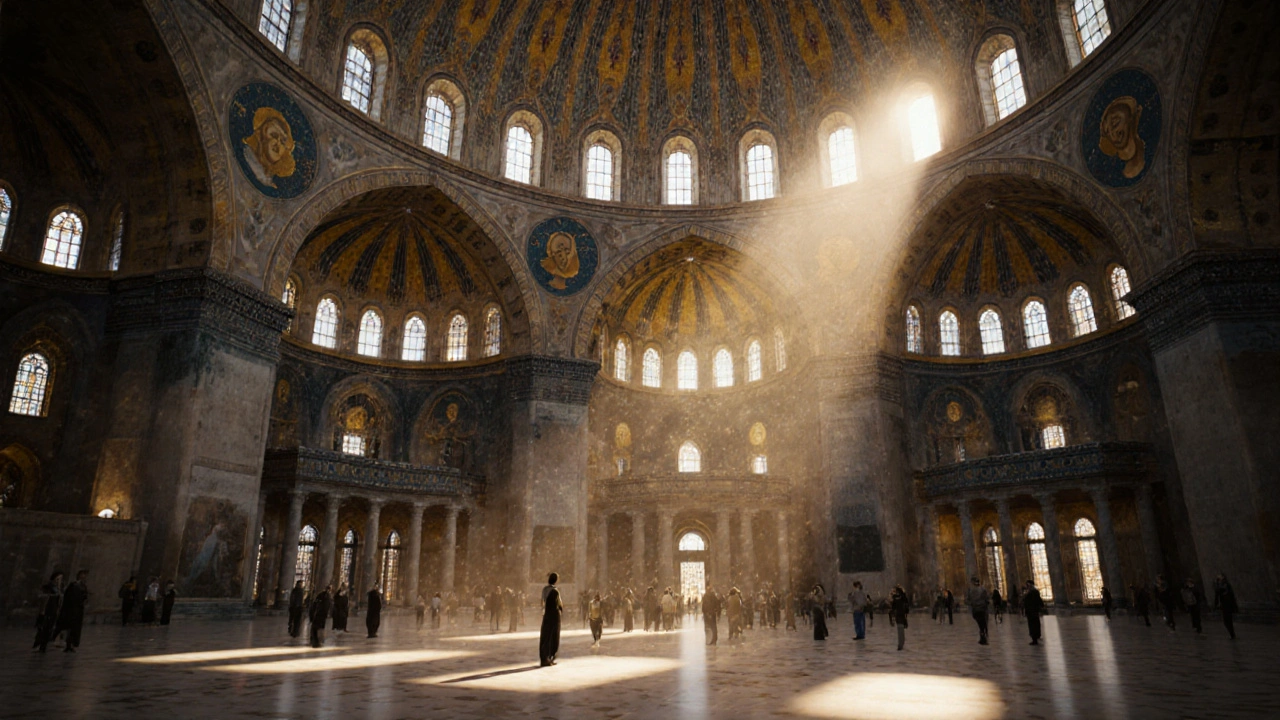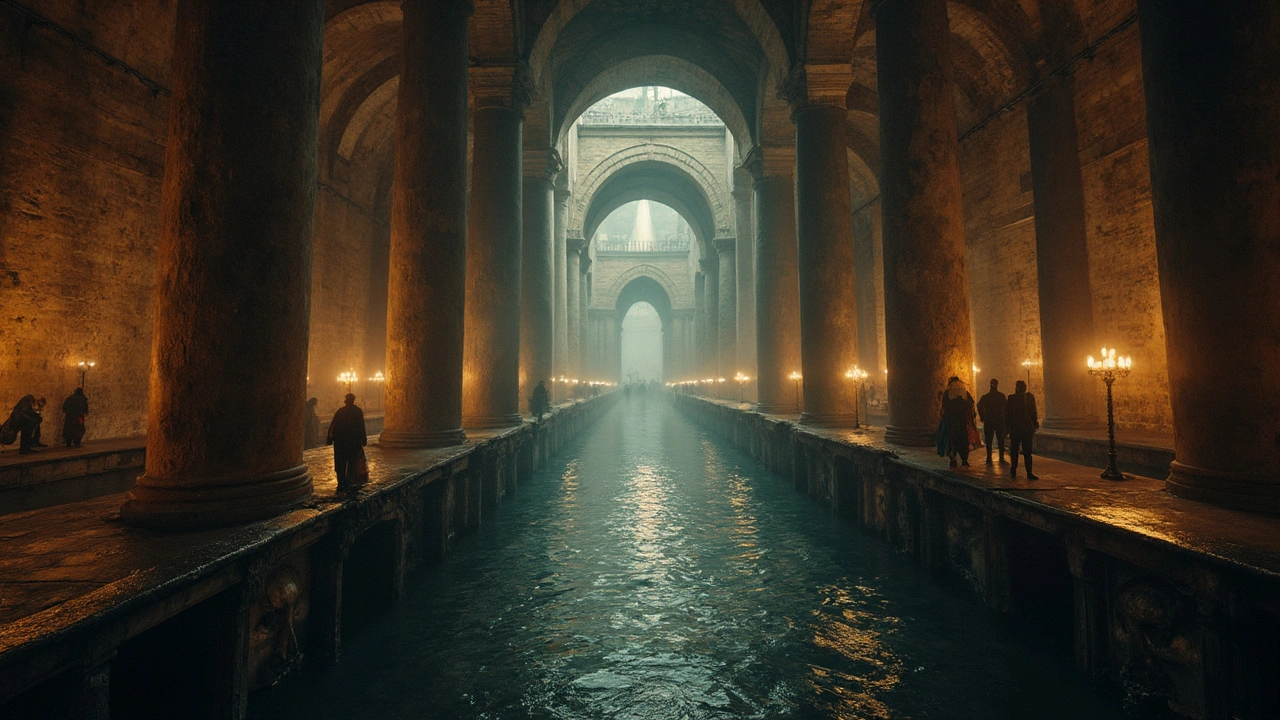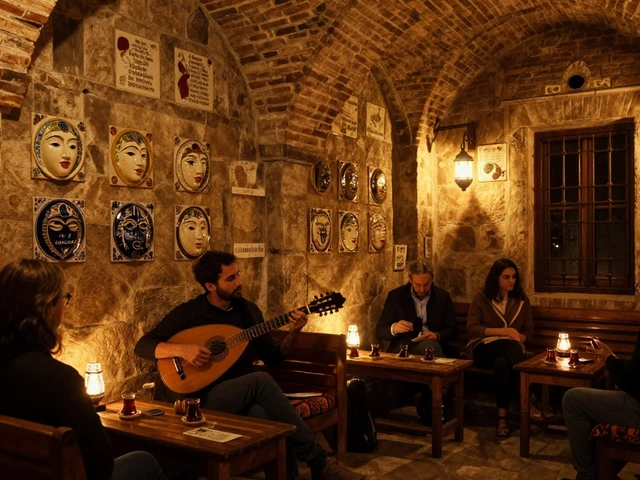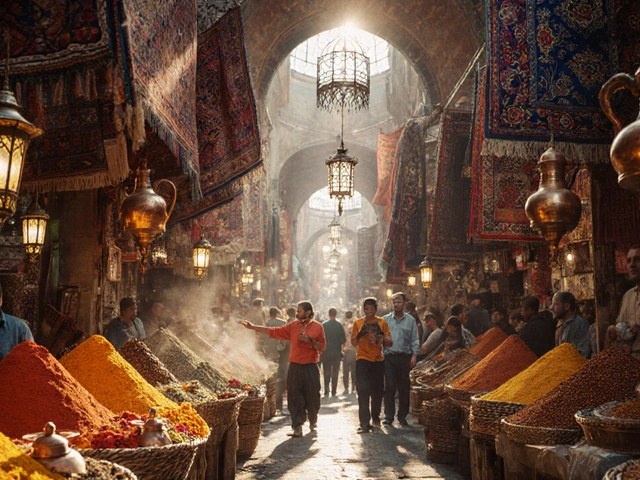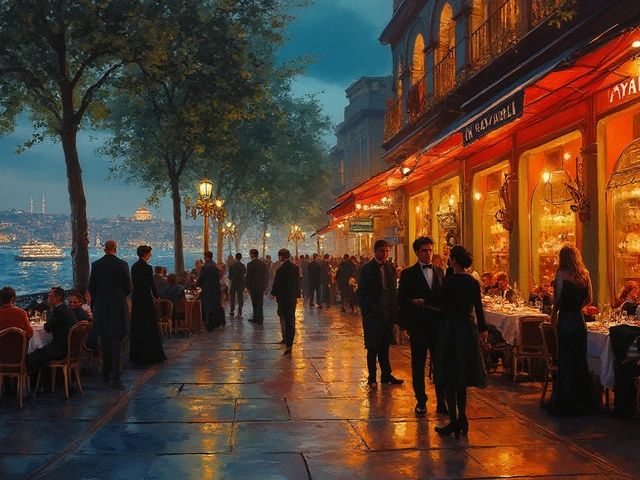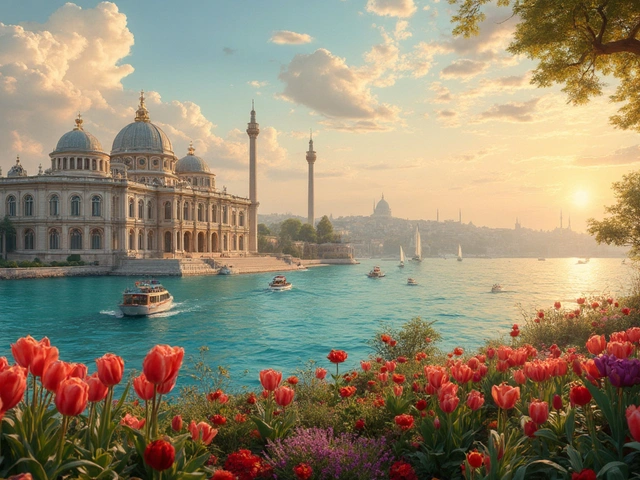Ever heard of a place where ancient stone columns hold up an entire lake right under your feet? That’s the Basilica Cistern, and it’s way cooler than you’d think for an underground water tank. Picture yourself stepping down into a world of flickering lights, echoing water droplets, and massive columns rising from the depths—like something straight out of a fantasy movie, but it’s real and waiting in Istanbul.
This spot isn’t just for history nerds—though, if you are, you’ll be in heaven. It's quiet, dark, and refreshingly cool when the Turkish heat is out of control. You’ll find Medusa heads tucked away in corners, and fish swimming in the shallow water, with plenty of photo ops that’ll make your friends jealous. If you hate crowds, early mornings or weekdays make for a much calmer vibe.
- What is the Basilica Cistern?
- Things to See Inside the Cistern
- Tips for Visiting
- Basilica Cistern vs. Other Istanbul Sights
What is the Basilica Cistern?
The Basilica Cistern is an ancient underground water reservoir right beneath the busy streets of Istanbul. Built in 532 AD during the rule of Emperor Justinian I, it’s the largest of several hundred cisterns under the city. Back in the day, it stored up to 80,000 cubic meters of water—enough to keep the imperial palace and surrounding buildings going even during a siege or dry spell.
If you’re wondering what makes it unique, here’s the deal: the cistern measures roughly 140 by 70 meters (about 460 by 230 feet), and holds up its brick ceiling with 336 marble columns arranged in 12 rows. Most of these columns are about 9 meters (almost 30 feet) tall. Plenty of these columns came from older Roman ruins, which means you’re basically walking through a mashup of recycled ancient architecture.
The name “Basilica” comes from a big public building—think of it like a community hall—that once stood on top of it. Ancient workers didn’t bother giving it a fancy new label, so the name stuck. There’s just something wild about how people in the 6th century could engineer something so massive, and it’s still standing today, open for anyone to visit.
- It’s known locally as “Yerebatan Sarnıcı,” which literally means “Cistern Sinking Into the Ground.”
- It’s only about a 5-minute walk from Istanbul’s Hagia Sophia and Blue Mosque, so it’s super easy to fit into your sightseeing plans.
- The cistern was out of public view for centuries, rediscovered by accident in the 16th century when locals pulled up buckets of water—and even fish—through holes in their floors.
This isn't just a tourist spot; the Basilica Cistern is a living piece of history right in the heart of Istanbul, tying together Roman engineering smarts with everyday life from ancient times all the way up to now.
Things to See Inside the Cistern
Walk inside the Basilica Cistern, and it feels like you're in a hidden world right under the city. The first thing that grabs your attention is the sheer size—it's about as big as two football fields and can hold 80,000 cubic meters of water. That’s enough to fill over 30 Olympic-sized pools!
It’s the forest of columns that really steals the show. There are 336 marble columns, each nearly 9 meters tall, and they’re all spaced out in neat rows. Some columns are plain, but others have cool touches, like the ones with upside-down or sideways Medusa heads as bases. These Medusa heads get tons of attention because, honestly, who expects to see Greek mythology tucked away in an old water tank? Scholars still argue about why they’re placed like that, but most people just think they look wild in selfies.
Besides the Medusa heads, keep an eye out for the “Hen’s Eye” column. This one stands out for its tear-shaped carvings running down the side—a cool detail that a lot of folks miss. Legend says these tears honor the workers who built the cistern. Little things like this make wandering around the place feel like a treasure hunt.
The water level isn’t so high these days, but you’ll probably spot some carp swimming around. They help control pests, believe it or not, and give the place an extra touch of life. If you’re someone who likes quirky details, several of these columns were recycled from older Roman buildings. You’re literally seeing pieces of ancient history repurposed for the city’s benefit.
- Medusa Heads: These sit at the bases of two columns at the far end and make for the best photo spots. No one’s 100% sure why they’re there, but they draw stacks of curious visitors every day.
- Hen’s Eye (Weeping) Column: Close to the center, this column with teardrop motifs is easy to miss but worth hunting down.
- Rows of Columns: With different designs and origins, walking among these feels like exploring an underground forest.
- Walkways & Lighting: You don’t need to worry about wet shoes. Sturdy wooden walkways and moody lighting let you stroll around safely and snap some killer photos.
- Carp in the Water: Kids love spotting the fat carp swimming through the shallow water. It’s proof there’s still ancient function in all this history.
If you want a quick look at the big highlights, here’s a handy breakdown:
| Feature | Why It’s Worth Seeing |
|---|---|
| Medusa Heads | Epic photo spot & unique, mysterious design |
| Hen’s Eye Column | Stands out for its teardrop decorations and legend |
| Carp in Water | Oddly charming; keeps the place bug-free |
| Ancient Columns | 336 relics, some recycled from Roman ruins |
So if you’re making a visit, don’t just breeze past—slow down, look around, and check off these highlights. They pack centuries of stories into one underground adventure.
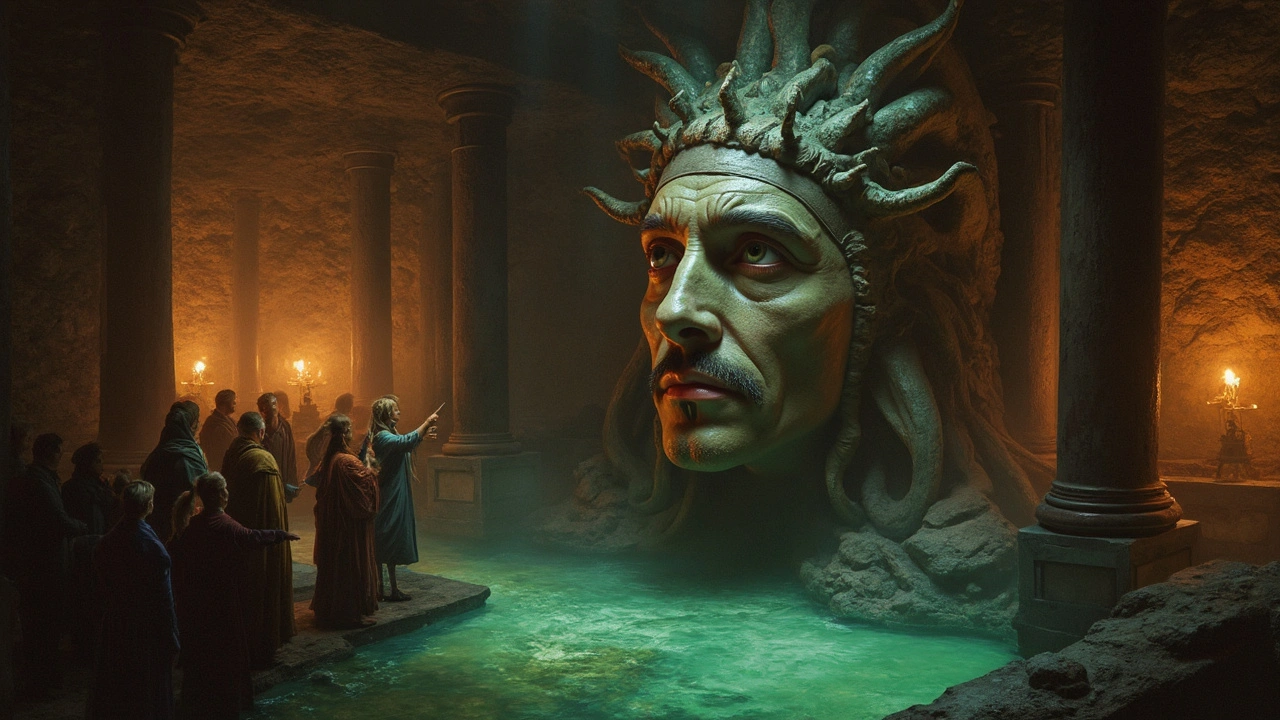
Tips for Visiting
If you want your Basilica Cistern experience to be smooth and memorable, let’s talk practical stuff. First, check opening hours before you go—usually, it's open daily from 9 AM to 7 PM, but these can change on Turkish holidays or for restoration work. You don’t want to show up early just to find the doors still locked or, worse, closed for cleaning. The entrance is right across from Hagia Sophia, so it’s pretty easy to spot.
Buy your tickets online if you can. This’ll save you some serious time, especially in peak season (think June through August). The line for walk-up tickets gets long—sometimes over 30 minutes just to get in. Tickets cost around 600 Turkish Lira for adults as of spring 2025, and kids under 7 can usually get in free. Credit cards are accepted, and you can also use the Istanbul Museum Card, but double-check this at the counter since rules change now and then.
When it comes to timing your visit, weekdays and early mornings are your best friends. By about 11 AM, tour buses and big groups roll in. If you’re serious about getting a photo without crowds, aim to be there right at opening time or an hour before closing.
- Wear comfortable shoes. The floor can be slippery thanks to the water and occasional puddles. Leave the flip-flops for the beach.
- The lighting is dim. Don’t expect Instagram-perfect natural light, but your phone camera will do the trick if you hold still.
- It’s cooler down there. Even in hot summers, you’ll notice the temperature drop as soon as you step in—pretty refreshing on a sweaty Istanbul day.
- The stairs are steep and sometimes damp. There’s no elevator, so keep that in mind if you have mobility issues or a stroller with you.
- Pack a little patience. Sometimes, tour groups cluster around popular spots like the Medusa heads—but the line moves pretty fast.
Want a better idea of costs? Here you go—real numbers help make decisions:
| Visitor Type | Ticket Price (2025) |
|---|---|
| Adult | 600 TL |
| Child (Under 7) | Free |
| Istanbul Museum Card | Check at entrance |
Pro tip: After you finish at the Basilica Cistern, you’re just a short walk from must-sees like the Blue Mosque and Hagia Sophia. Plan it all in one go to save your legs and make the most of your day.
Basilica Cistern vs. Other Istanbul Sights
When folks line up their Istanbul bucket list, the usual suspects pop up: Hagia Sophia, Blue Mosque, Grand Bazaar. So where does the Basilica Cistern fit in? Actually, it’s pretty different from the city’s other biggest draws—and a real change of pace when you’re museum-ed out or sunburnt from walking the streets.
Unlike the soaring domes of Hagia Sophia or the postcard-worthy Blue Mosque, the Basilica Cistern is all about going underground—literally. While most sights show off the city’s grand, above-ground history, here you’ll see the practical (and still a bit mysterious) side of ancient Istanbul. Built in the 6th century to stash water for the Byzantine emperors, this space served a real need rather than a religious or trading one. Many visitors say the spooky vibe and trickling water give it a unique, almost cinematic atmosphere.
Let’s break down some key differences so you know what to expect:
| Sight | Main Attraction | Crowds | Time Needed | Vibe |
|---|---|---|---|---|
| Basilica Cistern | Underground columns, Medusa heads, cool lighting | Moderate (less packed off-peak) |
45 min-1 hour | Chill, dark, mysterious |
| Hagia Sophia | Massive dome, Christian/Muslim art | Very busy | 1-2 hours | Grand, historic, bright |
| Blue Mosque | Blue-tiled interior, prayer area | Busy, more during prayer times | 30-45 min | Peaceful, spiritual |
| Grand Bazaar | Shopping, bargaining, food | Crowded | 1+ hours | Lively, chaotic |
Want some quick tips for comparing? Here you go:
- If you only have one hour and need some shade (especially in summer), the Basilica Cistern is perfect. It’s cool down there, literally.
- Into quirky details? The Medusa heads in the cistern are a must-see—you won’t find anything like them in the mosques or museums.
- Mobility issues? There are steps down, and it’s a bit damp, so be careful—whereas some of the other sights are easier to access.
- Basilica Cistern doesn’t require you to cover your head or take off your shoes, unlike the mosques.
If you want to brag about seeing a part of Istanbul that’s more offbeat but right in the heart of it all, the Basilica Cistern is a must. It gives you a completely different feel from the better-known, above-ground sights.
